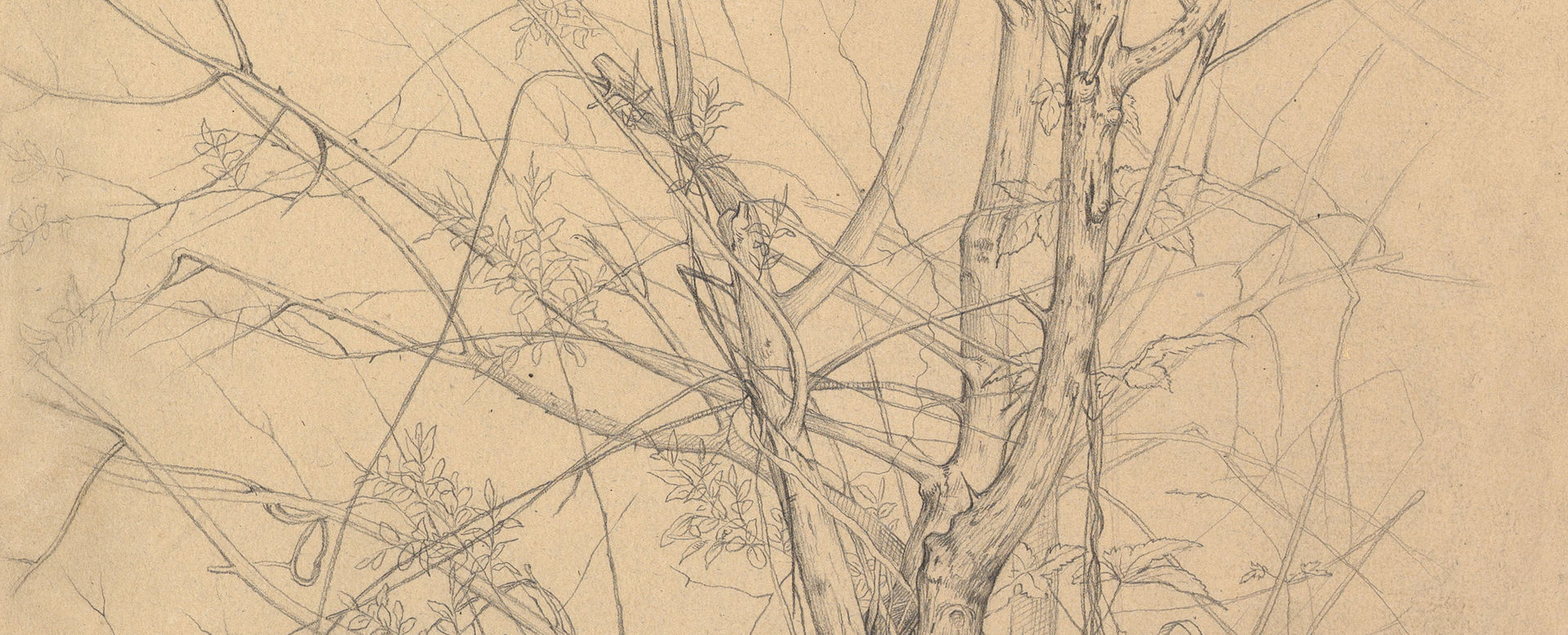Le Jeu de Bagues Chinoises
Anonymous, French, 19th century French
Commissioned by Favre Petitpierre et Cie French
Not on view
Design for a Toile de Nantes containing a number of garden scenes, probably based on real life activities that took place in Parisian gardens during the early-nineteenth century. The Toiles de Nantes were printed cotton textiles manufactured to imitate the Indian techniques in the town of Nantes, one of the most important centers of printed cotton manufacture in France during the eighteenth and nineteenth centuries. The design in this drawing was commissioned by the textile manufacturers Favre Petipierre et Cie, around 1805, for the production of one such Toile de Nantes.
The garden scenes in the design are divided in three horizontal levels, all placed inside a single square brown frame. On the upper level can be seen a round table under the branches of a tree, which emerge from the left side of the frame, around which gather three individuals: a man dressed in Empire military fashion sitting on the left, a woman standing in the middle and one sitting down to the right. The table contains a number of objects, which could possibly be table games or tableware. The two women are dressed in Empire fashion, with long dresses that drape around their bodies, with a high-cut waist, and their shoulders covered by shawls. Their hair is tied up, and the woman sitting is also wearing a bow. Another woman, most likely a servant, is approaching the table from the right, carrying what looks like a plant in her hands. She also wears an Empire style dress, although she does not seem to be wearing a shawl and her hear is covered with a turban. To the far right of this upper scene can be seen the shape of the bust of a man surrounded by bundles of branches with leaves. The lower level contains a group of women, all dressed with the empire-style, draped dresses that were fashionable at the time, playing with a young boy and running around the garden. Two of them wear turbans on their heads, and the others have their hair pulled back, and none of them seem to be wearing the shawls worn by the upper-class women pictured above.
The middle level contains what is perhaps the most interesting garden scene in this drawing: a representation of the so-called "Jeu de Bagues Chines" (game of Chinese rings), which was a popular activity in the gardens of Paris. Inspired on medieval jousts, the game consisted of a carrousel on which men and women would sit under an open parasole, which would be put into movement by a servant, as can be seen in the illustration. On the platform to the right side, another person would hang small rings on a wooden stand, which the players would try to catch with canes they held on their hands, one by one, as they passed by it on the moving carrousel. Players would often wear Oriental costumes to play the game, as can be clearly seen in the couple that is arriving on the left, where the exoticism of their costumes is highlighted in the turban covering the woman's head and the shape of the man's hat, so strikingly different from that of the other men. The servant, too, can be seen, standing on a platform on the right and plumping the mechanism that would make the carrousel move. This same scene was included in 1822 in Galignani's guide to Paris, and appeared in an engraved version titled "Mode du Jour, No. 16. Les amusements de la Bague Chinoise au Jardin de Tivoli" (Fashions of the Day, No. 16. The game of the Chinese Ring at Tivoli garden). This garden, which once stood where today lies the Gare Saint-Lazare, was a favorite of Parisian nobility in the late-18th century and early-19th century, and they gathered there to dance, play music, engage in conversations, play games, and other leisure activities that were fashionable at the time.


